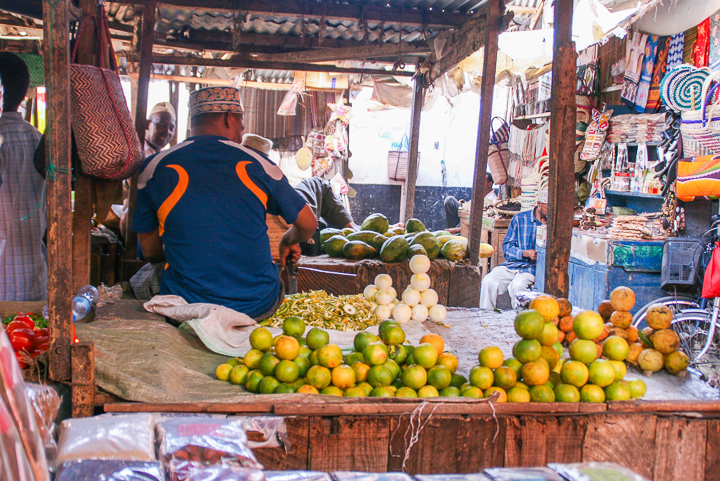
A visit to Zanzibar certainly wouldn’t be complete without a visit to a spice farm, now wouldn’t it?
On our bus ride to Abeid’s Spice Farm, I conjured up my own image of a spice farm in my head. What I saw was a Napa Valley-like setup, with trees and bushes planted in neat little rows throughout rolling hills. In my mind, this farm was perpetually fixed to one time: sundown.

Goodness knows what I was thinking. This is Africa, after all. So when we pulled up to a plot that could not have looked more uninteresting or unspectacular, and rather sparse, I was a little bit disappointed. There were trees, but they looked like….trees. There were bushes, but….they were just bushes. No neat little rows, and definitely nowhere near sundown, womp womp.
Our first stop out of the bus was to try a papaya. Great, I thought. This is going to be REAL exotic (cue eyes rolling to the back of my head).

But from there, we moved onto a tree with odd clusters of fuzzy fruit pods. Annatto. And then I knew things were going to get better.
You see, I happen to know a bit about the annatto tree. I once worked in a cheese shop, and at this cheese shop we sold Beemster Cheese. Beemster’s XO Gouda is a typical dutch-style hard cow’s milk cheese, made by a co-op of small farmers and exported all around the world from the Beemster Polder in The Netherlands. This Beemster XO is not only made from happy and healthy cows, but it’s famously aged for 26 months. As a result, it’s deliciously firm and full of flavor, reminding me of a salty butterscotch or a good salty toffee (don’t knock it ’til you try it!)
But I digress. Annatto. The deep, saturated orange-ish color in Beemster, the one that most cheeselovers assume is due to its 2 years of aging, is actually due to a natural dye…called Annatto. Beemster orange. I’ve been enamored by annatto for quite some time, especially after learning that it’s a natural dye used in foods like cheese (one that I love so much, to boot), and a dye so vibrant that many women once used it to color their lips and cheeks.

After the annatto tree, my worries of a boring afternoon were very quickly put to rest. From there, I got to taste pepper, straight from a tree- so peppery. I sucked on the bark of a cinnamon tree. Like, straight from the tree- into my mouth! I watched someone wash their hands with the berry from a tree that, like magic, lathered and cleaned like soap. I gnawed on lemongrass, sniffed fresh cloves and allspice, mashed curry leaves between my fingers, learned that each pineapple plant only produces a single pineapple fruit (and after 9 long months, geez), and unrooted bright yellow tumeric roots from the ground.



Though I imagine this would be an interesting trip for almost anyone, I gained particular joy from seeing where many of the spices I use so frequently in all my cooking come from. Spices that I am so familiar in their dried form, suddenly given life and a completely foreign appearance as berries, trees, bushes, plants, fruit.

In between this spicefest, we cleansed our palates by eating the papaya, gorging on jackfruit- a fruit that I swear tastes like Juicyfruit gum (and is now my new favorite treat), feasted on the fresh meat and juice from coconuts. We freshened our stinky bodies by rubbing ourselves with the ylang ylang flower. A flower that, I kid you not, smelled so similar to the beloved Chanel No. 5 scent. The farm keepers made the women bracelets and ice-cream-cone-like-baskets out of sturdy leaves and fronds (I was one lucky recipient of a pair of leaf glasses) and the men received sultan-worthy headcaps. We trampled around the farm like young girls and boys on an exploratory adventure.


It was like the Willy Wonka of farms, where everywhere you turned there was a bite to be taken or a lick to be had. I was just waiting for a river of curry to come bursting through, is all. More often than not, I would look down and find myself juggling a piece of some fruit in one hand, focusing my camera with another, being ordered to smell something that had been stuck under my nose, and trying to keep a collection of berries and leaves and seeds from being spilled. Somehow I also managed to take notes and snap iPhone pics too, and looking back I’m almost positive I won’t ever be able to multitask quite as well as I did on that day. I don’t think my senses will, either- by the end of the tour my head was dizzy from smells and tastebuds tingling from spice.
















































